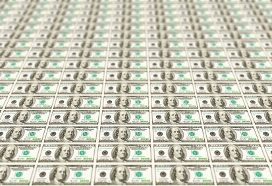Home / Forex news / US Dollar Plunges As Federal Reserve Warns of More Economic Pain in Q2

The US dollar is maintaining its downward trend from late last week as the greenback slumped on new economic data and a bearish Federal Reserve. Despite being one of the bright spots in chaotic global financial markets, the central bank has tried to pour cold water on the greenback, and it is finding success in suppressing its ascent in the international economy.
On Wednesday, the Federal Open Market Committee (FOMC) agreed to leave the target range for its federal funds rate unchanged in the range of 0% and 0.25%. The decision was unanimous, with all members agreeing to park rates near zero. Policymakers agreed at the April meeting that the coronavirus pandemic will continue to affect economic activity, employment levels, and inflation in the near term, adding that the public health crisis is still a threat to the economic outlook over the medium term.
Last month, the Fed imposed an emergency rate cut of 150 basis points, bringing interest rates to recession levels from a decade ago. Ostensibly, the Fed is not in a hurry to raise benchmark rates.
The central bank wrote in its official statement following the FOMC meeting that it is âcommittedâ to employing a âfull range of toolsâ to support the US economy and promote âits maximum employment and price stability goals.â
The coronavirus outbreak is causing tremendous human and economic hardship across the United States and around the world. The virus and the measures taken to protect public health are inducing sharp declines in economic activity and a surge in job losses. Weaker demand and significantly lower oil prices are holding down consumer price inflation. The disruptions to economic activity here and abroad have significantly affected financial conditions and have impaired the flow of credit to US households and businesses.
Fed Chair Jerome Powell spoke with reporters during a virtual press conference soon after the meeting. He revealed that the institution is âin no hurryâ to normalize monetary policy, stating that the Fed could be active throughout 2021 and possibly into 2022.
Powell conceded that a zero-interest-rate-policy would not do much unless individuals and companies spend, telling the press that âit may well be the case that the economy needs more support from all of us.â
So, how bad is it out there? Powell anticipates that the second-quarter decline will be unprecedented, explaining that economic data has yet to catch up to the real damage from the COVID-19 fallout.
Weâre going to see economic data for the second quarter that is worse than any data weâve seen for the economy.
Speaking of data, the Bureau of Economic Analysis (BEA)âs released its advance first-quarter gross domestic product (GDP) reading, and it was worse than market forecasts. The economy contracted 4.8% in the January-to-March period, worse than the consensus of -4%. This was driven by a decline in household consumption, a fall in business investments, and a crash in exports and imports.
In other data, mortgage applications dropped 3.3% for the week ending April 24, according to the Mortgage Bankers Association (MBA). This is down from the 0.3% slide in the previous week. Pending home sales cratered 20.8%, worse than analystsâ expectations of -10%. A recent MBA survey also found that mortgage forbearance has hit 7% of all loans.
The US Dollar Index, which measures the greenback against a basket of currencies, extended its string of losses. The buck slid 0.34% to 99.53, from an opening of 99.88.
The USD/CAD currency pair tumbled 0.74% to 1.3896, from an opening of 1.3997, at 19:20 GMT on Wednesday. The EUR/USD rose 0.49% to 1.0874, from an opening of 1.0820.
If you have any questions, comments, or opinions regarding the US Dollar, feel free to post them using the commentary form below.
Original from: www.earnforex.com
No Comments on “US Dollar Plunges As Federal Reserve Warns of More Economic Pain in Q2”